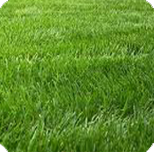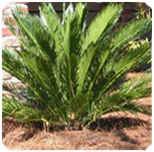When summer comes to an end and winter approaches many fall into the mindset that they no longer need to maintain their lawns. The heat is over and rainy days are approaching. Before fall end, however, there are a few important steps you need to take.
To ensure your grass is healthy and green for next spring there are a few basic needs your lawn will require. Good food, air and water are necessary for a lawn to thrive.
Food
A healthy lawn needs food to survive. In this case fertilizer. Fertilizer will give your lawn the endurance it needs to make it through the cold winter. It will also help to strengthen roots.
Air
Have you ever heard of aerating your lawn? It is a simple process of making holes in your lawn to allows two things to happen. Once the holes are made the roots of the grass can now breathe. The second benefit is that fertilizer can now reach the roots and provide nutrients.
Water
This is the easy part. Ensure your lawn has enough water and turn off any automatic sprinkler systems once the rainy season hits.
Preparing Your Lawn For Planting
Following important steps before you plant your new lawn can be the difference between a quality lawn and one that will require more upkeep and maintenance in the future. The most important element to your lawn will be the soil that is under the grass. Preparing your soil by applying and mixing the correct fertilizer to the top 6 inches will be critical to your lawn’s overall health. Once your lawn has been planted and established, it will be difficult to improve the soil.
Preparing your soil will be the first step. A good lawn will have a good pH with 7 being neutral. To begin test your soil’s pH. The ideal pH for most lawn grasses is mildly acidic and has a pH between 6 and 7. For soil that tests acidic add 50-100 pounds of ground limestone per every 1,000 sq. ft. of lawn. If your soil tests above pH 7 (alkaline soil) you can add 20 pounds of sulfur for every 1,000 square feet.
After balancing your pH you can begin to smooth your lawn, filling low spots. This is also the best time to add in some superphosphate into the top few inches of soil. Mix in the phosphorus at a rate of 50 pounds per 1,000 sq. ft. When smoothing your lawn make sure you slope the soil away from the house. This will ensure that any water runoff is directed away from the house. Leveling off high spots will be just as important too. High spots on your lawn can cause scalping when mowing your lawn.
Now would also be one of the best times to install a sprinkler system if you plan to add an automatic sprinkler system. Before planting your grass rent a roller and roll the yard flat. It may be a good idea to lightly sprinkle water to help the dirty settle.
There are three ways you can go when planting your lawn. Seeding, sod, and plugs are all options you can take. Seeding will be the most difficult but also the most cost effective. Sod will give you an instant lawn but is much more costly. Plugs are small sections or pieces of container grown grass that are planted every 6 to 12 inches apart. These pieces eventually fill in the empty spots with in a few months.
Lawn Care Professionals
If you need a professional lawn care service you can search through the Garden Center directory or for local California residents please contact a Orange County Landscape service to receive a free quote.








